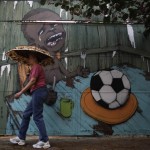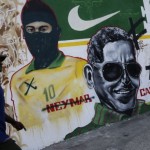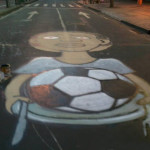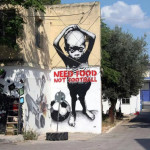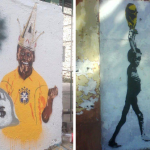Last summer’s protests made the discontent of many Brazilians over July’s World Cup clear – but as kickoff draws closer, protestors have found a new way to publicly question their country’s system.
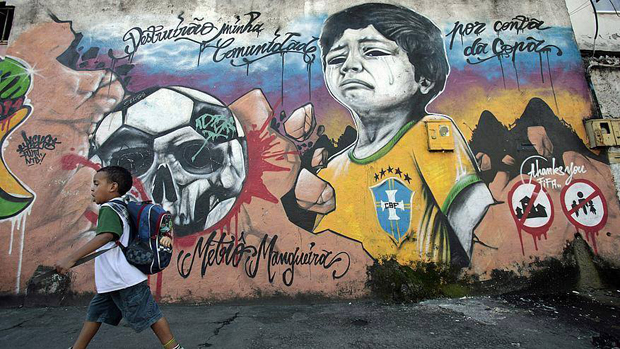
A Rio de Janeiro mural of a crying child reads in Portuguese, “They will destroy our community for the World Cup.”
The government of Brazil has taken a violent approach to repress recent protests over the world cup, as well as declaring protest-free zones around the stadiums which will host the tournament.
In response, Brazilians are embracing a rich history of street art to voice the opinions suppressed by the government. In Rio de Janeiro, which will host the final championship match of the world’s most-watched tournament, artists have taken their work to new levels
This is largely because street art (grafite, as opposed to tags, or pixação) has been fully legal in Rio since February, when it is on non-historic public buildings. Grafite in Brazil has long been viewed as a symbol of community, and in the weeks leading up to the World Cup the appearance of anti-FIFA slogans has clearly shown the community’s discord with its government, which has been viewed as ignoring the plight of its citizens in favor of the money and fame associated with international football.
This is especially clear in the art of Paulo Ito (a prominent São Paulo artist, featured below) and the leaders of Brazil’s artistic community, so often intertwined with the protest movement.
The work of these artists has been recognized internationally, with numerous campaigns in support of the rights of artistic expression.
- Paulo Ito’s São Paulo mural has brought global attention to Brazil’s plight
- Neymar, star of Brazil’s international team, depicted as a Black Bloc protestor
- Grafite has found its way to Copacabana’s Atlantic Avenue, one of Rio’s busiest roads
- Artists and protestors have united around the sentiment that Brazil has ignored its citizens for international fame
- Protestors and artists combat the idea that money and fame are Brazil’s political king

